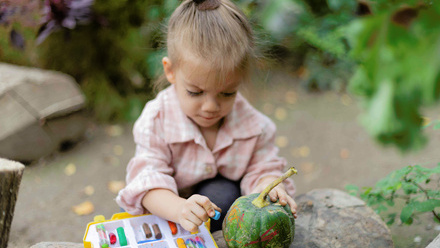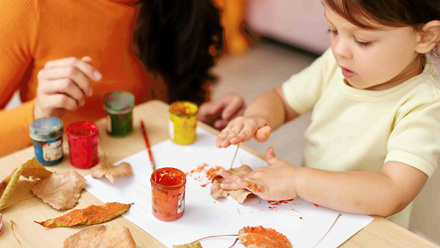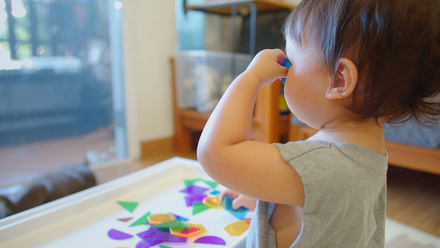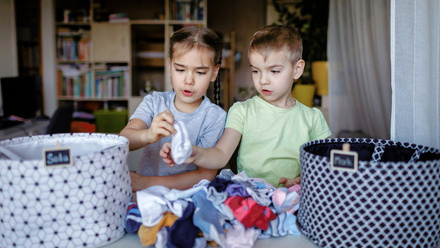Teaching early years maths outdoors
When we think about maths, the first thing that often springs to mind is ‘numbers’. Whether that be counting to ten, subitising to five, or recognising values in different environments, numbers do count for a significant amount of learning.
“Maths is everywhere” teachers often say during their termly speech to encourage young minds to see the true value of the subject. And they do have a point! We use our mathematical minds every single day, through our problem-solving, the way we navigate spaces, what we experiment with and the subconscious rationale behind every decision we make.
We use maths everywhere, so why should our learning of it be confined to a classroom? We know that high-quality early education and care settings give prodigious advantages to children’s outcomes and are truly magical places for learning to grow, but should it always be indoors? Growing attention is being paid to outdoor learning spaces – our lack of access to outdoor provision during the COVID-19 pandemic really highlighted the opportunities we were missing to learn and explore out and about.
Think outside the box
In this article, we’re going to ‘think outside the box’ and explore how we can use outdoor spaces to broaden our horizons, and how we can develop unique and meaningful maths opportunities throughout the setting and beyond. Numeracy in early education and care is a vast and exciting area of learning that can be utilised by every child in provision.
But there are lots of other areas to be explored across the maths curriculum, including:
- shapes
- space
- measurements
- comparisons
- pattern
- colour.
It’s important that we pay attention to all areas of early numeracy, and implement provisions that extend understanding across all of them in stimulating and enabling ways.
Numeracy is a key area of development in early education and care, and its importance is reflected through the curriculum across England, Wales and Scotland.
A wide range of research shows that early numeracy skills are not only indicators of later mathematical outcomes, but are also a reliable indicator for reading abilities and social-emotional development.
Just like maths learning areas are many and versatile, so are the places where math learning can happen. Outdoor spaces provide a whole range of benefits to children’s confidence, engagement, and metacognitive skills for all kinds of learning.
Being outdoors offers a rich space for sensory experiences and risk-taking. It allows room for play to take place on a larger scale and for more physical activity, which can evoke a new level of engagement for children who are less enthusiastic about ‘table top activities’ and indoor play.
Pre-school children who enjoy large amounts of outdoor time have been shown to consistently score better on standardised tests for executive function, attention and short-term memory than children attending pre-schools with fewer outdoor hours.
Here are some of our favourite ways to engage children in maths outdoors:
Large scale play
Outdoor spaces often offer a great deal more opportunity for physical movement and risky play. Why not use your outdoor area to investigate spatial reasoning on a larger scale? Tyres, boxes, and purpose-built outdoor resources all make great materials to create extravagant obstacle courses, exploring being ‘in’, ‘out’, ‘on’, ‘under’ and developing a strong sense of spatial perspective.
Natural patterns
Shape and pattern are core areas of early numeracy that allow children to develop their skills of comparison, analysis and recall. A lot of popular indoor resources provide a good foundation for understanding how patterns can form and recognising them in an isolated environment is a good starting point for knowledge. However, our outdoor spaces provide an interesting landscape to think about patterns in an ever-changing space.
Natural objects like petals, pinecones, leaves and stones allow children to explore patterns in intricate detail. Children may surprise you with what they notice and create!
Counting games
It’s surprising to reflect on how many interactions we have every day that use numbers and our playtime outdoors is no different. Adult-led activities, such as parachute games and number trails can be useful for encouraging mathematical language in physical activity, but child-led play can be just as fruitful in numeracy. Encourage sustained shared thinking throughout your outdoor interactions to plant the seeds of mathematical thinking into every moment.
Utilising the spaces we have in provision can be a challenge, especially if outdoor spaces are communal and need to be negotiated with others. Come rain or shine, outdoor provisions can be massively beneficial to creating a stimulating and accessible learning environment for all and developing our early numeracy skills is just one of the many ways we can make the most of our garden times and outdoor trips.
Further resources and readings
Why not explore our member resources for more ideas on outdoor provision or head to the NDNA website to explore the Maths Champions programme and more math-related resources.






